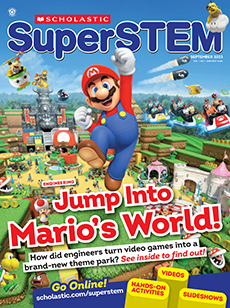A plane lands at the largest airport in Hawaii, located on the island of Oahu. More than 100 travelers grab their bags and step into warm sunshine. Their tropical stay has just begun—and so has Elise Krause’s work!
Krause is an aircraft mechanic for Hawaiian Airlines. From replacing broken seat belts to fixing jet engines, she makes sure planes are in top condition before they take to the skies again. Krause spoke to Scholastic about what it takes to keep planes soaring safely.
A plane lands at Hawaii’s largest airport. It’s on the island of Oahu. More than 100 travelers grab their bags. They step into warm sunshine. Their tropical stay has just begun. So has Elise Krause’s work!
Krause is an aircraft mechanic for Hawaiian Airlines. She makes sure planes are in top condition before they fly again. Krause fixes jet engines. She even replaces broken seat belts. Krause spoke to Scholastic about what it takes to keep planes soaring safely.

